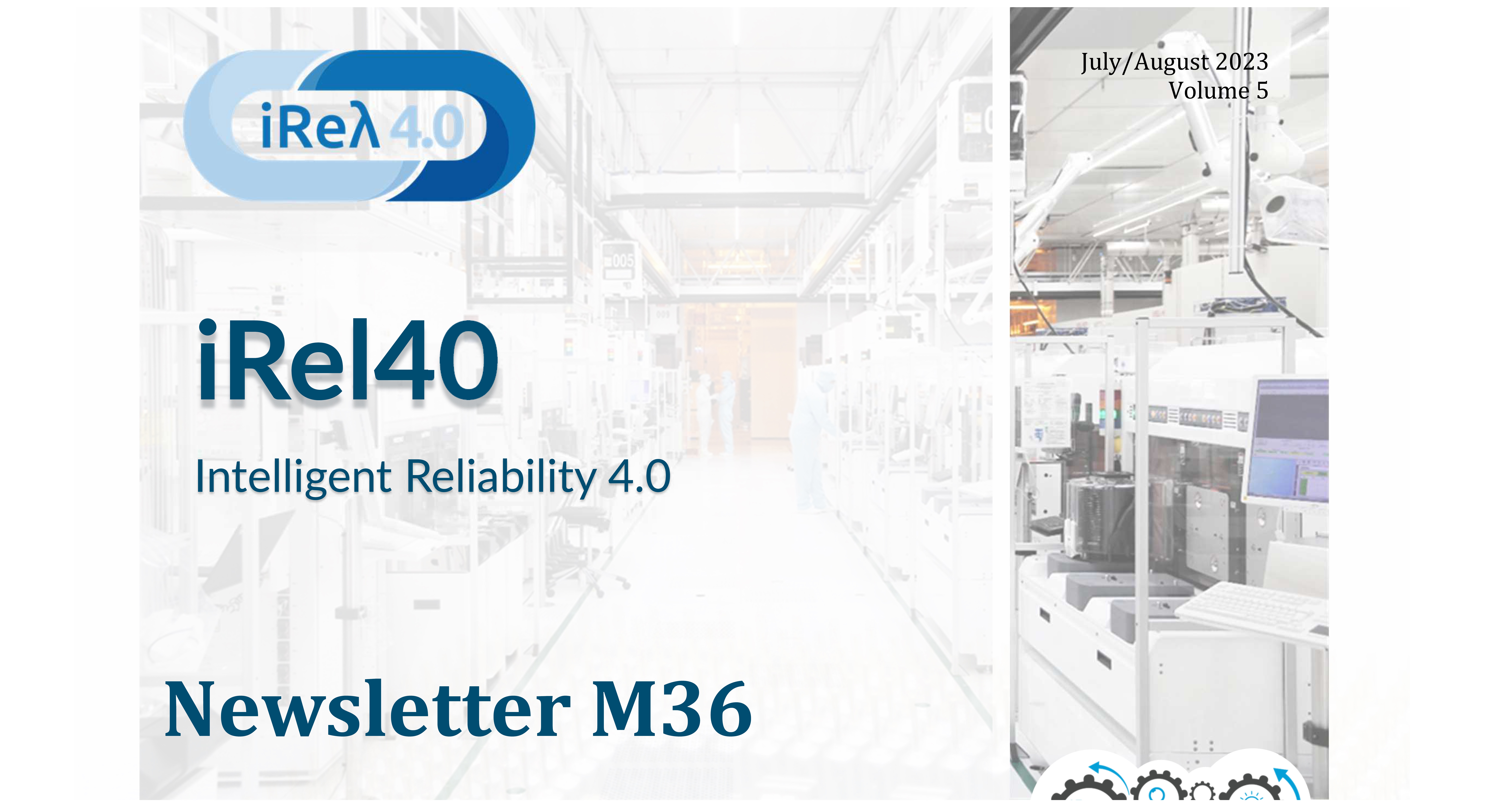
Newsletter M36
The iRel40 project consortium has prepared a fifth Newsletter (M36).

The iRel40 project consortium has prepared a fifth Newsletter (M36).

Burn-in (BI), i.e., the operation of devices under accelerated conditions, such as high temperature, is a well-established technique to screen out devices that fail in early life, so-called early failures. Within the iRel40 project, Infineon Technologies Austria AG developed a novel concept, that applies AI models to reduce Burn-in efforts, whilst keeping the device reliability unchanged.

Within the iRel40 project, Joshua Lommes from Fraunhofer IFAM has developed a barrier coating for electronic components. The barrier reduces the permeation of gases, e.g., water vapour, oxygen as well as harmful gases, which promotes the failure of an electronical high-performance device. With a sufficient barrier the lifetime and the reliability of such components can be enhanced drastically. The first developments were published in Microelectronic Engineering and highlighted in a German journal for paint and coatings. We are happy to share, that the latter article was nominated for a young scientist award.

The perception system of automated vehicles is a crucial component, that enables to sense and understand the environment of the vehicle. The system's accuracy and robustness are essential to ensure the safety and reliability of automated vehicles. Realistic usage profiles for automated applications are required to test and validate the system’s components already during the development phase. In iRel40, Virtual Vehicle developed such realistic annual usage profiles for a shuttle pod application, including driving, as well as weather profiles. Applying these profiles to predict the system temperature in a LIDAR, which in turn affects the predicted lifetime of the investigated device, describes one possible application of the developed profiles.

In the semiconductor industry additively manufactured spare parts for equipment are hardly used, as they go along with high characterization and qualification efforts for their use in the semiconductor manufacturing environment to ensure their and also the manufacturing reliability. Due to increasing delivery times and material requirements of spare parts as well as the availability of new technologies of 3D printing, IFAT decided to drive forward the additive manufacturing of spare parts in the context of iRel40.